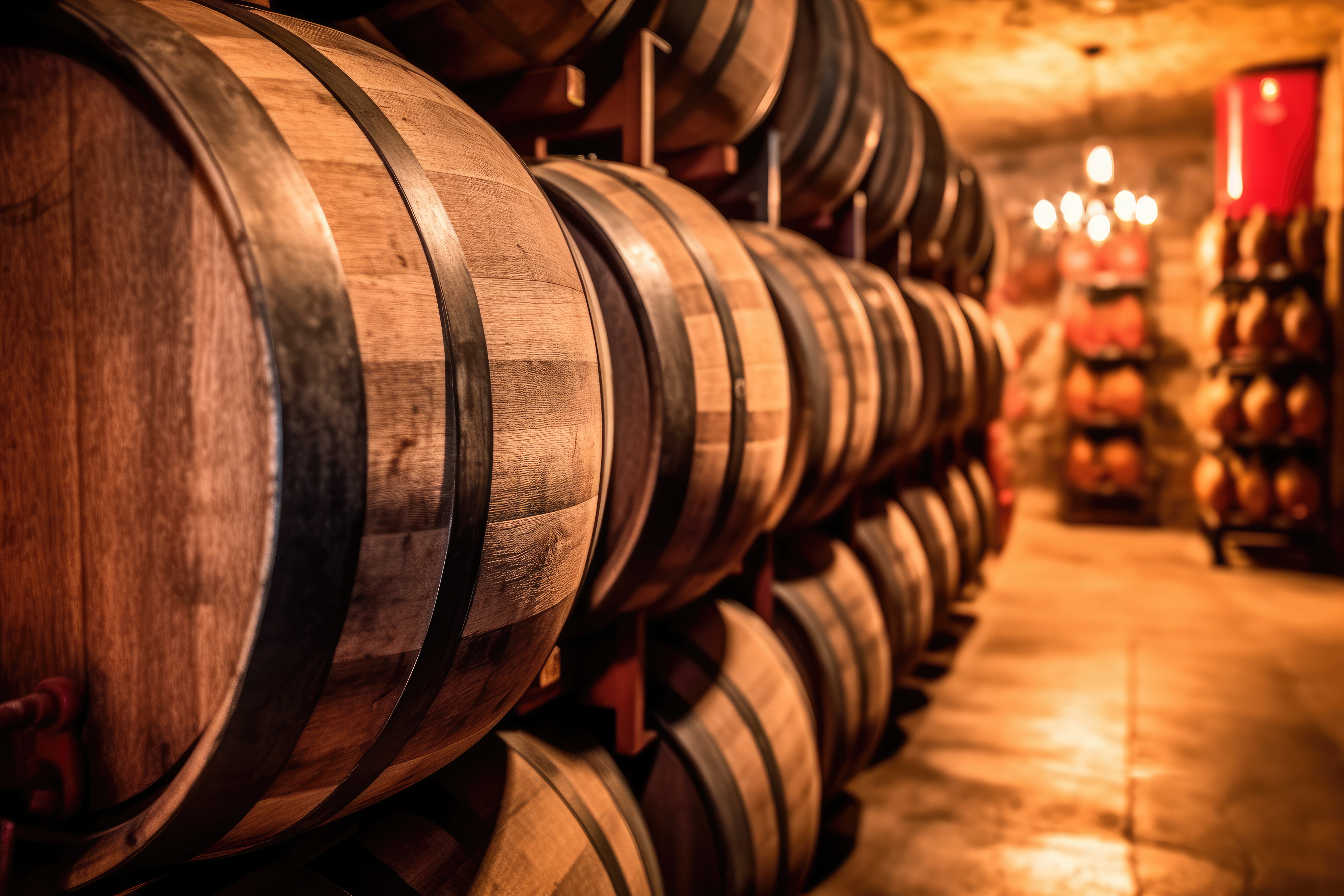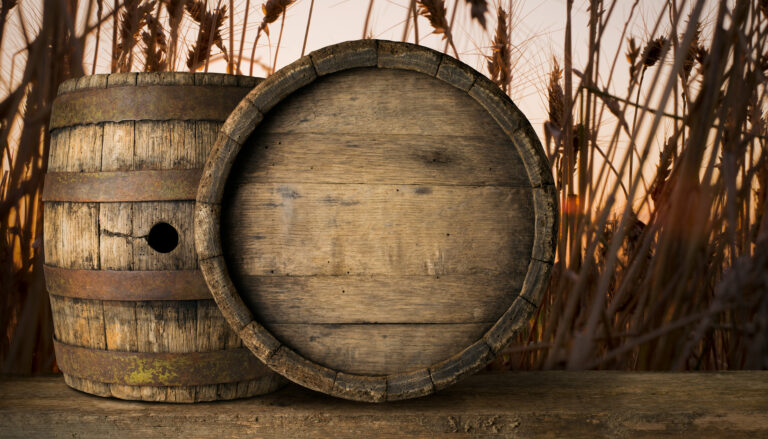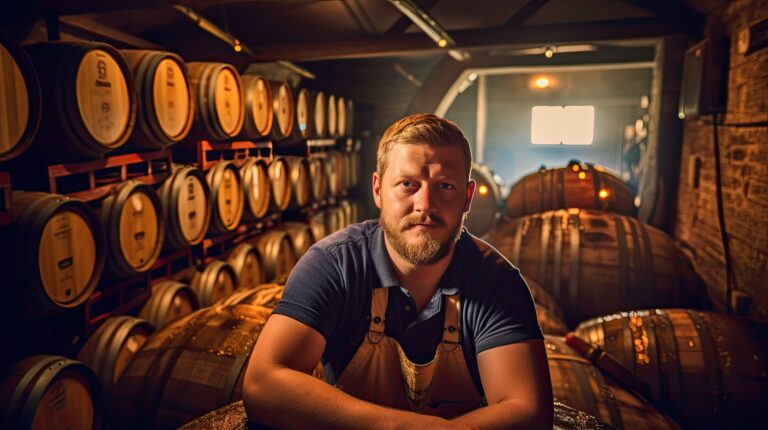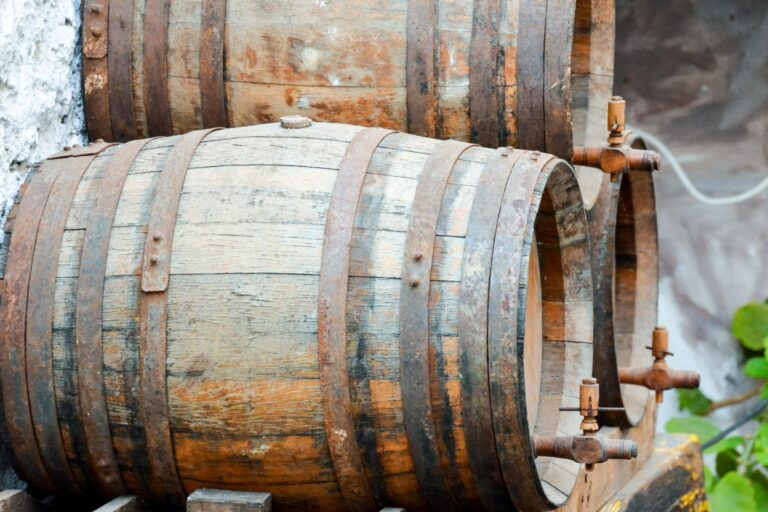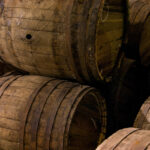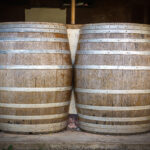Ever wonder why Scotch tastes so different from Kentucky bourbon? It’s all about aging – specifically, where that aging happens. Think about the climate inside a whiskey warehouse and how it affects your favorite bottle. Temperature, humidity, airflow… they all play a huge role in how the whiskey develops. The wood of the barrel is crucial too, interacting with the spirit to add flavor and color. It’s this combination of elements that creates the unique taste of whiskeys from different regions. So next time you’re enjoying a dram, consider the long journey it took to create those complex flavors and aromas. Your whiskey’s taste is as much about the climate where it aged as it is about the ingredients.
The Magic of Barrel Aging
Aging is essential for developing those complex whiskey flavors. As the spirit rests in charred oak barrels, it pulls out compounds from the wood, giving whiskey its signature caramel color and those vanilla, spice, and dried fruit notes we love.
The Warehouse is Key
The warehouse’s location and climate drastically impact how quickly a whiskey ages and develops its character. Warmer areas speed things up, while cooler spots slow the process down.
- Higher temperatures make the whiskey expand into the wood, absorbing more flavor. The heat also accelerates the chemical reactions between the spirit and the wood.
- Temperature swings, going from warm to cool, also boost aging. The whiskey moves in and out of the wood as it expands and contracts, picking up oaky flavors.
- Warehouses with good airflow age whiskey faster. As the spirit evaporates, it draws more whiskey from the barrel to replace it, infusing the whiskey with flavors and aromas. Warehouses that are too airtight slow down evaporation and aging.
- Where a barrel sits in the warehouse matters too. Barrels on the top floor age fastest due to more heat and evaporation. The middle floors age at a moderate pace, and the bottom floor ages slowest.
By managing temperature, airflow, and barrel placement, distillers can carefully shape the flavor of their whiskeys. The warehouse is just as important as the barrel in creating a quality aged spirit. A few years in the right conditions can produce a whiskey as complex as one aged for decades in less ideal surroundings.
How Warehouse Climate Affects Barrels
The barrels themselves are vital, but warehouse climate also plays a big part. Where and how the barrels are stored matters. Temperature changes cause the whiskey to move in and out of the wood, absorbing and releasing compounds that affect its flavor and aroma.
- In warmer warehouses, the whiskey penetrates the wood more, leading to a darker, oakier flavor.
- In cooler warehouses, the whiskey moves slower, resulting in lighter, fruitier notes.
- Humidity is another factor. Higher humidity prevents too much evaporation, allowing the whiskey to age longer. Drier air causes more loss, speeding up aging. 60-70% relative humidity is the sweet spot.
- Barrel rotation and positioning affect how much of the surface area is exposed, which in turn affects oxidation and evaporation. Barrels stored higher up age faster due to warmer temperatures.
After years of aging, a master distiller tastes barrels from different warehouse areas to create the perfect blend. Choosing the right mix of barrel ages, positions, and weather conditions is essential for a complex, balanced whiskey. So next time you sip an aged whiskey, appreciate the years of care – and climate – that went into crafting that perfect blend of flavor, aroma, and character. The warehouse environment is just as important as the barrel itself.
The Temperature’s Influence on Whiskey
Temperature is crucial to whiskey aging. The temperature changes cause the whiskey to expand and contract, drawing out compounds from the charred oak, giving the whiskey its characteristic aroma, flavor, and color.
- Seasonal Shifts: In the summer, higher temperatures make the whiskey expand into the wood, extracting more of the oak’s vanilla and caramel flavors and its amber color. In the fall and winter, the whiskey contracts. This constant movement is essential for maturation.
- Warehouse Variations: Warehouses aren’t usually climate-controlled, so temperatures change throughout the year. Whiskey in barrels higher up experiences more extreme temperature swings, which often accelerates aging, resulting in bolder flavors faster.
- The Ideal Range: Most distillers agree that the best spot for bourbon aging is in the middle floors of a warehouse, where temperatures are more moderate. Here, the whiskey has enough heat and cool periods to develop complexity without becoming too oaky too quickly. For most bourbons, 4 to 10 years in these conditions is ideal.
Weather and temperatures vary in different whiskey regions. Colder places like Scotland see fewer temperature changes during aging compared to hotter areas. The warehouse’s location also matters, with some benefiting from natural cooling or warmth. All these things combine to shape a whiskey’s character and determine how long it needs to age. When you sip your favorite whiskey, you’re tasting the seasons.
Humidity: Getting it Right
Managing humidity is key to optimizing barrel aging. Humidity directly affects how much liquid evaporates, which in turn affects how the whiskey’s flavors develop.
- Keep an Eye On It: You need to track the relative humidity closely. The ideal range is usually 65 to 75%. Too low, and too much liquid evaporates. Too high, and there’s not enough evaporation and flavor development.
- Adding and Removing Barrels: Adding or removing barrels can help regulate humidity. More barrels mean more evaporation and less moisture in the air. Fewer barrels have the opposite effect. You can also group barrels closer together to increase humidity locally.
- Ventilation and Airflow: Good ventilation and airflow are also important. Opening windows and vents, using fans, and positioning barrels strategically can help move air in and out as needed. Good airflow creates an even environment.
- Heating and Cooling: As a last resort, you might need heaters or air conditioners. Be careful, though. You don’t want to drastically change the temperature, just make small adjustments. Sudden changes can affect how the barrels and whiskey mature.
By monitoring conditions and making small changes to ventilation, airflow, and barrel placement, you can achieve the best humidity balance for aging premium whiskey. Keeping things steady allows the water and alcohol to interact with the wood, developing rich flavors and a smooth character.
Climate’s Impact on Flavor
The aging process involves storing the distilled spirit in charred oak barrels, usually American white oak. The charring adds flavor and color. But climate is also crucial.
- Temperature: Warehouse temperature significantly affects how quickly whiskey ages and develops flavor. Warmer temperatures speed things up, while cooler temperatures slow them down. Distillers often use different areas of the warehouse to achieve their desired aging effects.
- Humidity: Relative humidity influences how whiskey matures. Higher humidity releases more of the barrel’s oak compounds, resulting in a darker color and stronger wood flavor. Lower humidity slows the infusion of oak flavors. Controlling humidity is important.
- Air Pressure: Changes in air pressure, especially lower pressure, make the whiskey expand and penetrate deeper into the wood. When the pressure returns, some of those wood compounds stay in the whiskey, changing its taste. Fluctuations in air pressure add to the whiskey’s complexity.
- Seasonal Changes: Temperature, humidity, and air pressure change throughout the year. These natural variations create whiskeys with rich, complex flavors. The interaction with the oak over the seasons results in a final spirit that reflects the cycle of the year.
Understanding how climate affects aging allows distillers to have more control and craft whiskeys with specific flavor profiles. But ultimately, the seasonal changes and natural variations create whiskeys with distinctive character.
Regional Climate Differences
Regional differences in warehouse climate greatly affect whiskey aging. Temperature, humidity, and airflow all play a role.
- Temperature: Warmer climates, especially in the southern US, speed up aging. The higher temperatures cause the whiskey to interact more with the charred oak, resulting in darker, richer whiskeys faster. Cooler climates, like Scotland and Ireland, produce lighter, smoother whiskeys over longer periods.
- Humidity: More humid environments prevent too much evaporation, allowing the whiskey to soak up more oak and caramel flavors. Drier climates can lead to significant “angel’s share” losses. While this concentrates flavors, too much evaporation reduces the yield. Most distillers aim for 60-70% relative humidity for a balance.
- Airflow: Good airflow is important for circulating the aging whiskey fumes, which help develop aroma and flavor. Stagnant air prevents this. Many distillers rotate barrel locations, moving those on the top level to lower levels and vice versa, exposing the whiskey to different conditions.
The location and climate of a warehouse shape the final character of the aged spirit. By understanding these environmental factors, distillers can produce a diverse range of whiskeys. The aging process is still as much art as science.
Warehouse Design: Getting it Right
Optimizing your warehouse is key to making the best whiskey. Several factors directly affect how barrels age and develop flavor.
- Temperature: Temperature has a huge impact. Warmer temperatures speed up aging, while colder temperatures slow it down. Many distillers use different barrel locations at different levels in the warehouse.
- Humidity: Humidity is also important. More humid conditions allow for greater interaction with the wood, imparting more oak flavors. Less humid air reduces this. Controlling humidity and airflow helps ensure consistent aging.
- Airflow: How air circulates affects temperature and humidity. Good airflow promotes even aging, while stagnant air can lead to uneven results. Most distillers rotate barrels to maximize exposure to airflow.
- Barrel Location: Where barrels are placed impacts how quickly they age. Top floors are warmer, speeding up aging, while lower floors are cooler. Barrels near open windows or doors also tend to age faster. Many master distillers use barrels from different levels and locations for blending to create complex flavors.
- Light Exposure: While less significant than other factors, light can affect aging and flavor. More light can lead to slightly faster aging and a darker color. Limiting natural light helps provide consistent results.
Optimizing these elements – temperature, humidity, airflow, location, and light – gives you tight control over barrel aging. Even small adjustments to your warehouse design can have a big impact on the quality of your whiskey. The patience required for barrel aging is well worth the reward.
Innovations in Climate Control
Innovations in climate control have allowed whiskey makers to fine-tune the aging environment. By manipulating factors like temperature and humidity, distillers can impact how quickly whiskey matures.
- Heating and Cooling: Many warehouses now use heating and cooling to speed up or slow down aging. Raising the temperature accelerates maturation, while lowering it decelerates it. Heating during cold months prevents the whiskey from becoming too viscous to properly penetrate the barrel.
- Humidity Regulation: Controlling humidity is crucial. High humidity prevents too much evaporation, allowing for longer aging. Lower humidity speeds up evaporation and concentrates flavors. Precise humidity control, especially at higher temperatures, is important for avoiding unwanted side effects like barrel expansion and leaking.
- Air Circulation: Stagnant air prevents the whiskey from fully absorbing characteristics from the barrel. Fans and ventilation systems help circulate air, ensuring exposure to the full range of flavors. Many distillers circulate naturally temperatured and humidified air to provide oxygenation without energy-intensive climate control.
- Barrel Rotation: Regularly rotating barrels allows for even exposure to variations in temperature, humidity, and airflow. This helps create consistency between batches and prevents the whiskey from becoming over-saturated with flavors from a particular section of the warehouse.
Innovations in warehouse climate control and barrel management have provided whiskey makers unprecedented control over the maturation process. By balancing science and craft, distillers are creating whiskeys with distinctive flavor profiles.
Whiskey Barrels and Warehouse Climate: FAQs
The relationship between whiskey barrels and warehouse climate is key. They work together to age the whiskey and develop its distinctive flavor and aroma.
- Barrel Selection: The type of barrel, typically oak, impacts aging. Charred barrels impart more flavor. Barrels previously used for bourbon or sherry add extra notes. Choosing barrels with the right level of char and previous use is the first step.
- Temperature Fluctuations: As temperatures rise and fall, the whiskey expands and contracts in the barrels. This causes it to soak into the wood and then extract compounds that contribute to its flavor and color. Moderate temperatures are ideal. Extreme heat can impart a bitter taste.
- Humidity Levels: Humidity influences aging. High humidity swells the wood, closing the pores. When humidity drops, the wood contracts, opening the pores. This expansion and contraction exposes the whiskey to more wood compounds, accelerating maturation. Moderate humidity is best.
- Air Flow: Good airflow provides oxygen for the chemical reactions during aging. Stagnant air limits these reactions. Some distilleries use fans to keep air moving.
- Length of Aging: The longer whiskey ages, the more complex its flavor becomes. Most whiskeys age for at least 2 years, but 3-5 years is more common. Premium whiskeys are often aged 10-25 years or more. Be patient – good whiskey takes time!
With the right barrels, temperature, humidity, airflow, and time, a distiller can craft an exceptional whiskey. The relationship between the whiskey and its environment is truly symbiotic.
Final Thoughts
So there you have it, the secret behind what gives your favorite whiskey its distinctive flavor and aroma. While the grains, yeasts, and distillation process matter, the aging conditions are just as critical. The barrels provide the vehicle for flavor infusion, and the warehouse environment enables the necessary chemical reactions. Humidity, heat, airflow, and time are the perfect recipe for mellowing and maturation. Now when you swirl and sniff that glass of amber liquid, you’ll have a whole new appreciation for the craft. You’re not just enjoying a drink, you’re savoring the culmination of nature, science, and human artistry. The next time you tour a distillery, pay attention to the barrels and warehousing – that’s where the real magic happens.
